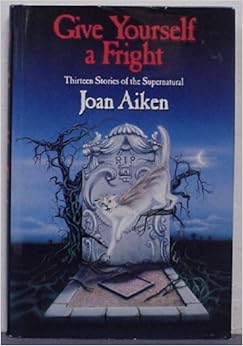
Joan Aiken, born September 4, 1924, was a British author well known for her children’s novels (especially for The Wolves of Willoughby Chase), but she also wrote excellent short stories, and fiction for teens and adults. While her work could be fantastic (as it is in the Armitage Family stories) and subversively funny (such as the tales of Arabel and Mortimer, her raven) her writing for all three audiences often contained dark, Gothic, or supernatural elements.
Can you tell that I love Joan Aiken?
I have enthusiastically read everything of hers that I have found since I first read her A Necklace of Raindrops, when I was about eight years old. Which is not to say I have read everything she’s written. The book she’s probably most well known for is her Gothic historical fantasy for middle graders, The Wolves of Willoughby Chase, but that was published in 1962, and she continued to write for the rest of her life. Although she died in 2004, her works are actually still being published (The Monkey’s Wedding and Other Stories, from Small Beer Press, was released as recently as 2011). A review from Bookslut, quoted on Small Beer’s website, compared Aiken to Shirley Jackson.
Because Aiken is mainly identified as a children’s author, it’s quite possible that you have never considered reading her work. But if you love ghost stories, Gothic atmosphere, and tales both disturbing and enchanting, you should.
In a blog post on Aiken’s short fiction, Jed Hartman notes:
…In general, Aiken doesn’t much distinguish between stories for children and stories for grown-ups… And it’s often hard to decide whether to class a given Aiken story as a kids’ story or a grown-ups’ story, which is all to the good. Almost all of the best children’s books — from Alice onward — can be enjoyed by adults as well.
Ready to give yourself a fright, Joan Aiken style? Here’s the official Joan Aiken site’s list of books specifically with supernatural themes. And here’s the complete biblography, just in case you get carried away.
Enjoy!




Follow Us!